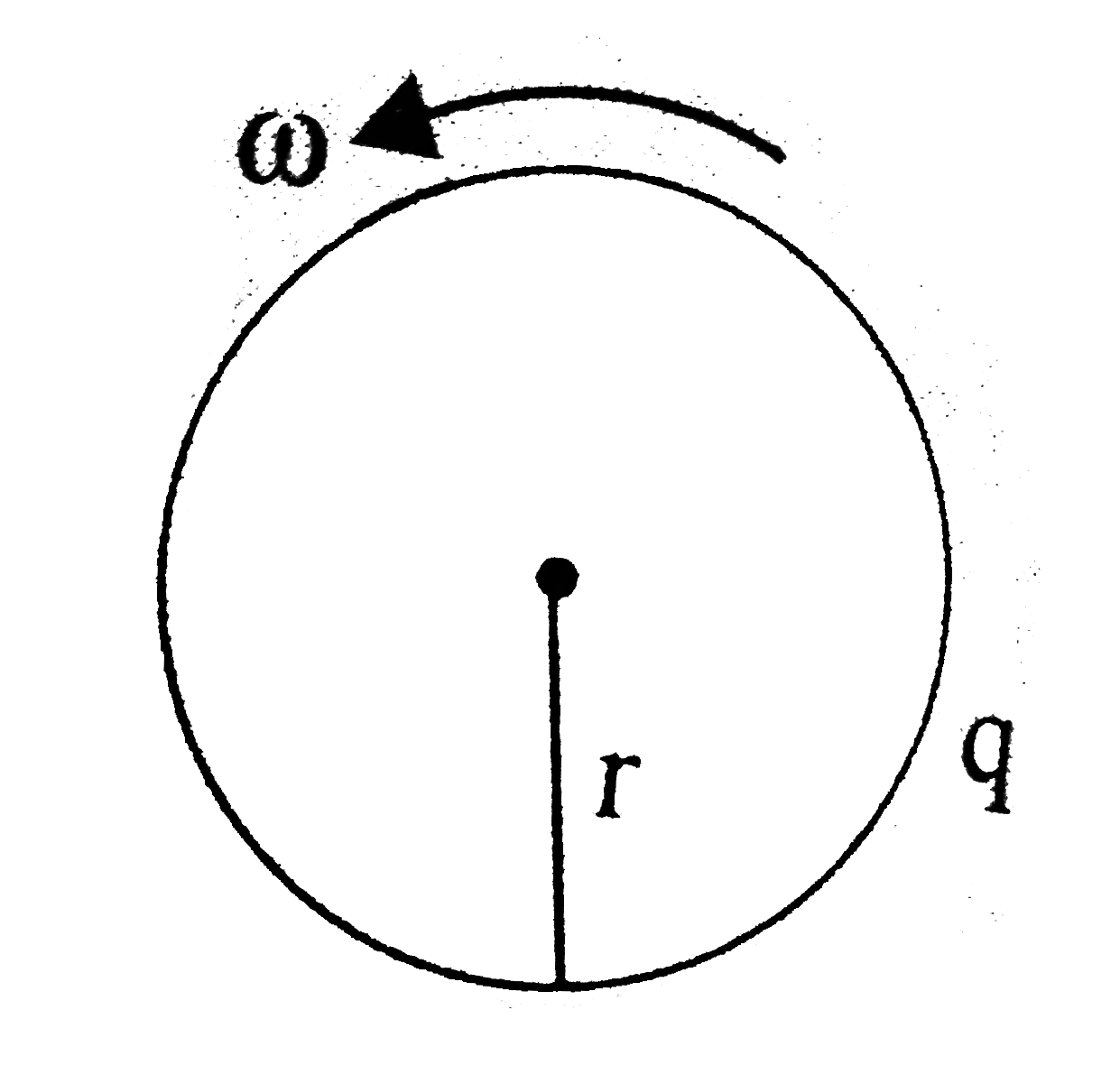A non-conducting charged ring of charge q. mass m and radius r is rotated with constant angular speed ω. Find the ratio of its magnetic moment with angular momentum is ............. . Solution in Tamil
qm
2qm
q2m
q4m
The correct Answer is:B
Step by step video, text & image solution for A non-conducting charged ring of charge q. mass m and radius r is rotated with constant angular speed omega. Find the ratio of its magnetic moment with angular momentum is ............. . by Physics experts to help you in doubts & scoring excellent marks in Class 12 exams.
Topper's Solved these Questions
- BOOK - FULL MARKSCHAPTER - MAGNETISM AND MAGNETIC EFFECTS OF ELECTRIC CURRENT EXERCISE - TEXT EVALUATION SOLVED -SHORT ANSWER QUESTIONS10videos
MAGNETISM AND MAGNETIC EFFECTS OF ELECTRIC CURRENT
- BOOK - FULL MARKSCHAPTER - MAGNETISM AND MAGNETIC EFFECTS OF ELECTRIC CURRENT EXERCISE - TEXT EVALUATION SOLVED - LONG ANSWER QUESTIONS12videos
MAGNETISM AND MAGNETIC EFFECTS OF ELECTRIC CURRENT
- BOOK - FULL MARKSCHAPTER - MAGNETISM AND MAGNETIC EFFECTS OF ELECTRIC CURRENT EXERCISE - ADDITIONAL QUESTIONS SOLVED - NUMERICAL PROBLEMS :4videos
MAGNETISM AND MAGNETIC EFFECTS OF ELECTRIC CURRENT
- BOOK - FULL MARKSCHAPTER - ELECTROSTATICS EXERCISE - ADDITIONAL QUESTIONS SOLVED ( VII. NUMERICAL PROBLEMS )5videos
ELECTROSTATICS
- BOOK - FULL MARKSCHAPTER - OPTICSEXERCISE - ADDITIONAL QUESITON - II ADDITIONAL PROBLEMS:11videos
OPTICS
Similar Questions
What is meant by magnetic induction ?
02:50View SolutionDiscuss Earth's magnetic field in detail.
01:26View SolutionThe radius of the first orbit of hydrogen atom is 0.5 Å. The electron moves is an orbit with a uniform speed of 2.2×106ms−1. What is the magnetic field produced at the centre of the uncleus due to the mation of this electron ? Use μ0=4π×10−7Hm−1 and electric charge =1.6×10−19 C
04:55View SolutionElectrons are caused to fall through a potential difference of 1500 volts. If they were initially at rest. Then calculate their final speed.
01:52View SolutionLight from a point source in air falls on a spherical glass surface (n = 1.5 and radius of curvature = 20 cm ). The distance of the light source from the glass surface is 100 cm. At what position the image is formed ?
06:41View SolutionA particle of the charged q and mass m moves in a circular orbit of radius r with angular speed omega . The ratio of the magnitude of its magnetic moment to that of its angular momentum depends on
04:55View SolutionA conducting ring of radius r having charge q is rotating with angular velocity ω about its axes. Find the magnetic field at the centre of the ring.
 06:41View Solution
06:41View SolutionA non - conducting charged ring of charge q , mass m and radius r is rotated with constant angular speed omega . Find the ratio of its magnetic moment with angular momentum is
04:10View SolutionA ring of mass m and radius R is given a charge q. It is then rotated about its axis with angular velocity ω.Find
(iii)Magnetic moment of ring.View SolutionA non-conducting charged ring of charge q. mass m and radius r is rotated with constant angular speed ω. Find the ratio of its magnetic moment with angular momentum is ............. .
04:50View SolutionA non - conducting charged ring of charge q , mass m and radius r is rotated with constant angular speed ω . Find the ratio of its magnetic moment with angular momentum is
03:32View SolutionA non-conducting charged ring of charge q. mass m and radius r is rotated with constant angular speed ω. Find the ratio of its magnetic moment with angular momentum is ............. .
02:09View SolutionA thin uniform ring of radius R carrying charge q and mass m rotates about its axis with angular velocity ω. Find the ratio of its magnetic moment and angular momentum.
02:25View SolutionA thin uniform ring of radius R carrying charge q and mass m rotates about its axis with angular velocity ω. Find the ratio of its magnetic moment and angular momentum.
01:14View SolutionA thin uniformring of radius R carrying uniform charge Q and mass M rotates about its axis with angular velocity omega . The ratio of its magnetic moment and angular momentum is:
View Solution

